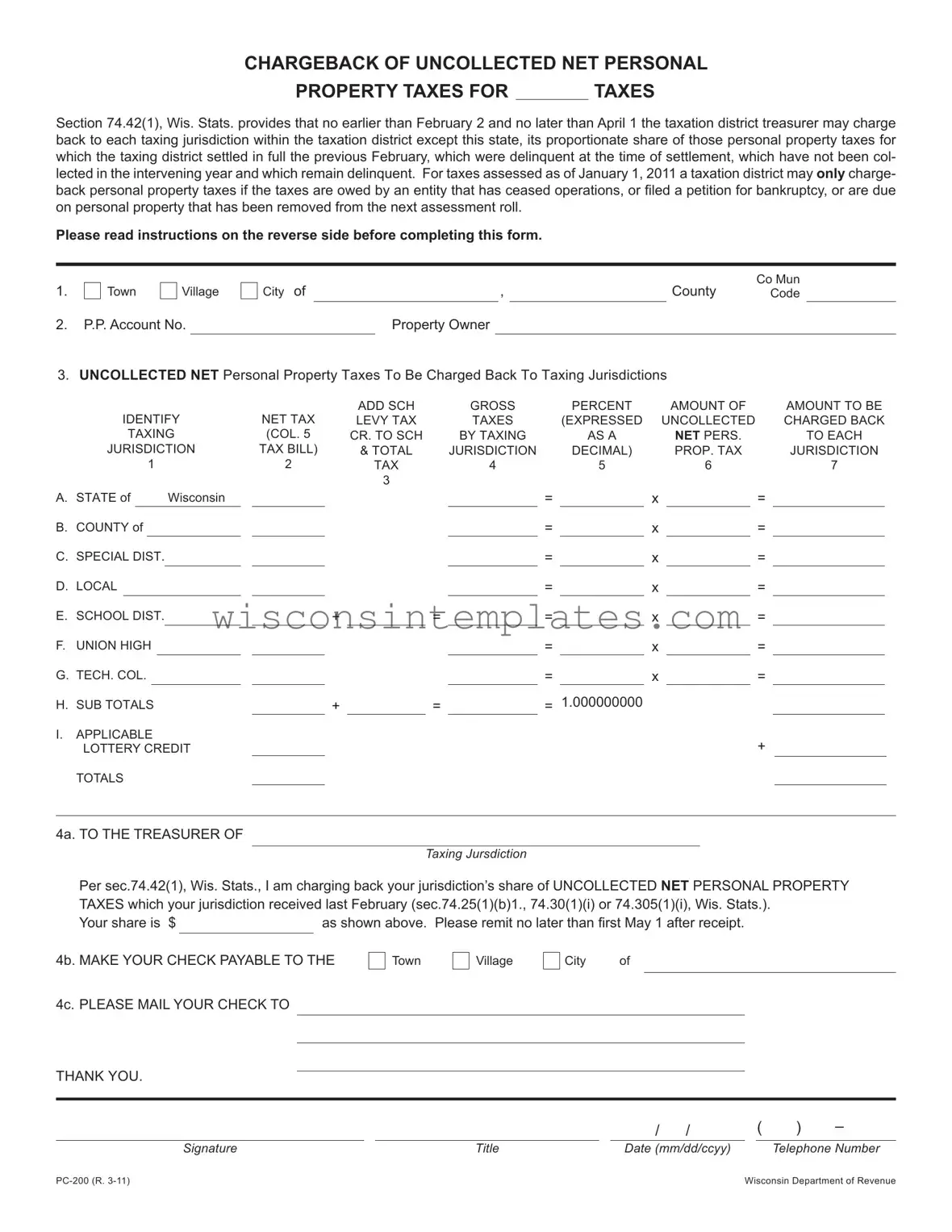The Wisconsin PC 200 form plays a crucial role in the management of uncollected personal property taxes within taxation districts. This form allows taxation district treasurers to charge back a proportionate share of these taxes to each taxing jurisdiction, excluding the state, during a specified time frame between February 2 and April 1. It addresses situations where personal property taxes, settled in full the previous February, remain uncollected due to delinquency. Notably, for taxes assessed as of January 1, 2011, the form can only be utilized when the owed taxes are linked to entities that have ceased operations, filed for bankruptcy, or involve personal property removed from the next assessment roll. Completing the PC 200 requires careful attention to detail, including accurate calculations of the uncollected net personal property taxes owed by each jurisdiction. The form also includes specific instructions for filling it out correctly, emphasizing the need for clarity in reporting and accountability among taxing jurisdictions. Timely submission is essential, as jurisdictions must remit payment by May 1 following receipt of the chargeback notice. Understanding the intricacies of this form can significantly impact local government finance and tax collection efforts.
